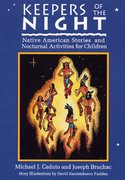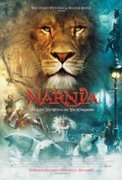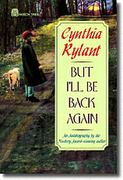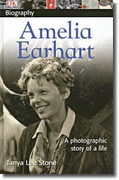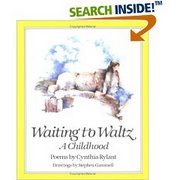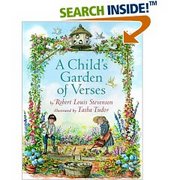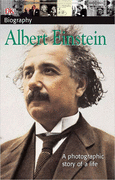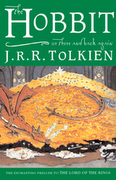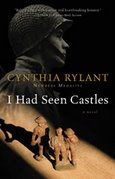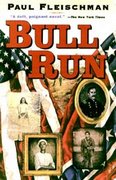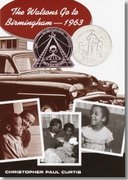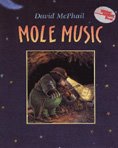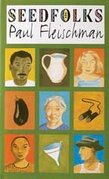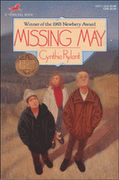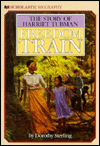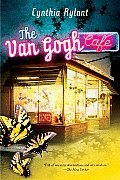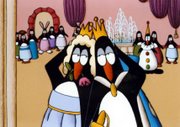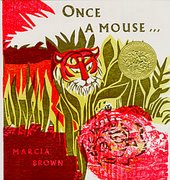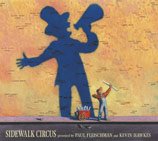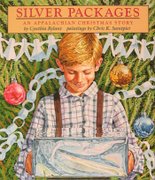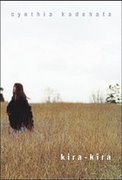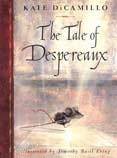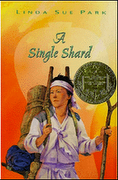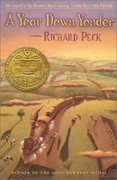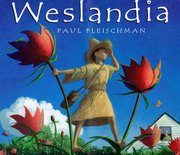by E.L. Konigsburg
“A View from Saturday” is a story about a sixth-grade teacher, Mrs. Olinski, who coaches a team of students in an academic competition similar to the Mind Olympiad or the College Bowl. Mrs. Olinski chose four students to be on the team and nicknamed them “The Souls”. When asked why she chose those particular students, she had no answer, but she knew they were the right choice. At one point the superintendent of schools questioned her choice of students stating that they were not diversified. Mrs. Olinski answered that, “In the interest of diversity, I chose a brunette, a redhead, a blond, and a kid with hair as black as print.” I cracked up! I coach teams for Virginia’s Great Computer Challenge each. Each year, administrators remind me to diversify, and every year we struggle to find students to compete. We take anyone who will show up, and that’s as diversified as we can manage! The superintendent reprimanded Mrs. Olinski for her answer after spending three days at a multicultural workshop for ‘ed-you-kay-tears’.
“A View from Saturday” tells the story of each of the four children who make up the team. Each child has had turmoil or sadness in his/her life and has taken a journey of discovery to learn to handle the turmoil. One child’s father was described as, “The storm in our private lives had picked him up and put him out of place.” In a way, all four team members of ‘The Souls” were ‘out of place’ and trying to find their way back to normal. Without knowing why, it is the journey each child is traveling that Mrs. Olinski chose the members of the team. She sensed their turmoil.
E.L. Koningsburg’s use of similes and metaphors are a wonder. “It seemed as exciting as watching a red light change” is an apt description for many events in life. “Dad hovered over me like the Goodyear blimp, “ reminds me of some of my own students who need their hands held every step of the way during math class. And “Dad could no more swing than a gate on rusty hinges.”
Several passages in “A View from Saturday” will make the reader laugh out loud. If the reader has ever been to Florida, the reader will recognize the truth of, “There are so many blonde widows in the state of Florida, they ought to have a kennel breed named and registered for them.” I remember my son accidentally washing his pet turtle down the drain. He cried, and I tried unsuccessfully to console him. I wish I had read this book so I could have quoted the author as saying, “Turtles are not trainable animals. Their brains are in the range of mini to micro.” This might not have helped my son, but it surely would have helped me!
“A View from Saturday” is a wonderful book choice not only for a study of similes and metaphors or for the use of vivid description, but also for humor. E.L. Konigsburg takes weaknesses and turns them into strength in a celebration of the resilience of youth.
Lesson Plans can be found at:
http://www.sdcoe.k12.ca.us/score/view/viewtg.html
Friday, May 4, 2007
The Art of Reading: Forty Illustrators Celebrate the RIF’s 40th Anniversary
Compiled by Dutton Books
The Reading is Fundamental program celebrated its 4oth Anniversary in 2005 several ways including this book, “The Art of Reading:” Forty different illustrators chose their personal favorite childhood books to write about and to illustrate. The illustrations snare the reader immediately. The cover of a calico cat and a fuzzy gray mouse sitting on the page and reading a book together caught my eye and even though I tried to resist checking out yet another book, I had to have it.
Nonfiction text structure lessons dictated that I go through the table of contents, check the glossary and index, and preview all the names of the illustrators before actually reading the text. However, once the book is open-forget text structure and lessons! Each illustrator competed to create art that catches the eye and stirs the imagination. I had intended to read this book quickly, but that just wasn’t possible. Each picture had to be explored then each story had to be read but not in order. Just let the pages fly past you and read whatever appeals. Eventually, all the stories will be read. The artwork is that compelling.
Ahley Bryan loved spirituals and uses primitive art to illustrate his life’s work of promoting African American music. David McPhail, author of “Mole Music” wrote that he now realized that he would not live long enough to read all the books he wanted to read. But he also wrote that, “It’s a comfort to know that I’ll never run out of reading material.” McPhail’s favorite childhood book was “The Five Chinese Brothers.” Lynne Cherry drew a beautiful garden scene perfect for a small child nursery for her favorite book “How the Mole Got His Pockets.” Steven Kellogg chose “Black Beauty” as his favorite book and states that the book changed his life forever focusing his adult passion into a campaign for the humane treatment of animals. One illustrator chose a book that I now must read but had never heard of, “The Thing in Dolores’ Piano”. Peter Sis, a native of Communist Czechoslovakia had no books at all, but once saw a copy of Albrecht Durer’s ‘Rhinoceros’ in a museum. When he immigrated to America, Mr. Sis was passionate about the rhinoceros and wrote and illustrated a book about the animal. Patricia Polacco chose Dr. Seuss’ “Horton Hatches the Egg” and drew a hysterically funny picture of a young girl sitting on the sofa with Horton reading his book.
Animals dominated the illustrators’ choices of favorite books with Charlotte’s Web or other stories that had pigs as major characters. I still do not understand this preoccupation with pigs!
Several illustrators chose childhood favorites from amongst books that I had never heard of which is exciting. “The Art of Reading: Forty Illustrators Celebrate the RIF’s 40th Anniversary” is a wonderful book to show children. They can flip through the pages until something catches their eye. Something will, and a book will be discovered.
The Reading is Fundamental program celebrated its 4oth Anniversary in 2005 several ways including this book, “The Art of Reading:” Forty different illustrators chose their personal favorite childhood books to write about and to illustrate. The illustrations snare the reader immediately. The cover of a calico cat and a fuzzy gray mouse sitting on the page and reading a book together caught my eye and even though I tried to resist checking out yet another book, I had to have it.
Nonfiction text structure lessons dictated that I go through the table of contents, check the glossary and index, and preview all the names of the illustrators before actually reading the text. However, once the book is open-forget text structure and lessons! Each illustrator competed to create art that catches the eye and stirs the imagination. I had intended to read this book quickly, but that just wasn’t possible. Each picture had to be explored then each story had to be read but not in order. Just let the pages fly past you and read whatever appeals. Eventually, all the stories will be read. The artwork is that compelling.
Ahley Bryan loved spirituals and uses primitive art to illustrate his life’s work of promoting African American music. David McPhail, author of “Mole Music” wrote that he now realized that he would not live long enough to read all the books he wanted to read. But he also wrote that, “It’s a comfort to know that I’ll never run out of reading material.” McPhail’s favorite childhood book was “The Five Chinese Brothers.” Lynne Cherry drew a beautiful garden scene perfect for a small child nursery for her favorite book “How the Mole Got His Pockets.” Steven Kellogg chose “Black Beauty” as his favorite book and states that the book changed his life forever focusing his adult passion into a campaign for the humane treatment of animals. One illustrator chose a book that I now must read but had never heard of, “The Thing in Dolores’ Piano”. Peter Sis, a native of Communist Czechoslovakia had no books at all, but once saw a copy of Albrecht Durer’s ‘Rhinoceros’ in a museum. When he immigrated to America, Mr. Sis was passionate about the rhinoceros and wrote and illustrated a book about the animal. Patricia Polacco chose Dr. Seuss’ “Horton Hatches the Egg” and drew a hysterically funny picture of a young girl sitting on the sofa with Horton reading his book.
Animals dominated the illustrators’ choices of favorite books with Charlotte’s Web or other stories that had pigs as major characters. I still do not understand this preoccupation with pigs!
Several illustrators chose childhood favorites from amongst books that I had never heard of which is exciting. “The Art of Reading: Forty Illustrators Celebrate the RIF’s 40th Anniversary” is a wonderful book to show children. They can flip through the pages until something catches their eye. Something will, and a book will be discovered.
Keepers of the Night
by Michael J. Caduto and Joseph Bruchac
Illustrated by David K. Fadden
“Keepers of the Night” includes eight Native North American stories with a focus on nature and the outdoors during nighttime.
The first story is called “The Birth of Light”. The Yuchi tribe uses this story to explain to children that night is another world that can only be driven back by people with fire. The fire first came from the sun when the sun answered the wind’s request for more light. The sun tried, “So hard that some of her sweat fell upon the earth. Where that sweat fell, the first people sprang up.”
After the reader reads each story, explanations of the story are given, how other tribes explain the same events, poems, and reference materials are listed. The book even shows drawing, provides lists of materials needed, and explains activities step-by-step to help the reader understand the stories. Detailed explanations are given with diagrams how to make a campfire, how to make game pieces, and game boards. Crafts compliment each story. “Keepers of the Night” even provides lesson plans with questions and answers. Teachers and scout leaders would love this book!
Dancing children and a bear become constellations. A chipmunk is tricked, and a brown squirrel is given the gift of flight for helping the sun rise into the sky, and other wonderful stories fascinate the reader.
“Keepers of the Night” is a fabulous book. Besides telling the Native American version of the stories, it includes the scientific explanation behind each natural event in the stories in easy to understand language.
I checked the book out from the library, but now I have to buy it because an idea for a book of my own came to me while I read it!
Illustrated by David K. Fadden
“Keepers of the Night” includes eight Native North American stories with a focus on nature and the outdoors during nighttime.
The first story is called “The Birth of Light”. The Yuchi tribe uses this story to explain to children that night is another world that can only be driven back by people with fire. The fire first came from the sun when the sun answered the wind’s request for more light. The sun tried, “So hard that some of her sweat fell upon the earth. Where that sweat fell, the first people sprang up.”
After the reader reads each story, explanations of the story are given, how other tribes explain the same events, poems, and reference materials are listed. The book even shows drawing, provides lists of materials needed, and explains activities step-by-step to help the reader understand the stories. Detailed explanations are given with diagrams how to make a campfire, how to make game pieces, and game boards. Crafts compliment each story. “Keepers of the Night” even provides lesson plans with questions and answers. Teachers and scout leaders would love this book!
Dancing children and a bear become constellations. A chipmunk is tricked, and a brown squirrel is given the gift of flight for helping the sun rise into the sky, and other wonderful stories fascinate the reader.
“Keepers of the Night” is a fabulous book. Besides telling the Native American version of the stories, it includes the scientific explanation behind each natural event in the stories in easy to understand language.
I checked the book out from the library, but now I have to buy it because an idea for a book of my own came to me while I read it!
I Hate Mathematics! Book
by Marilyn Burns
Illustrated by Martha Weston
“I Hate Mathematics! Book” was on sale at a local bookstore in the children’s section. The price was right, and I was looking for an informational book. This book is written in comic book format with shaded pencil drawings and dialogue balloons.
Silly phrases like, “How’s trix?’ and “Neither of them knows squat…” fill the book. Each page is a new math game activity, or riddle. For example, one riddle asks, “Some months have 30 days, some 31. How many have 28?” The answer is, “All of them!” As a teacher, I found “I Hate Mathematics! Book” to be a terrific source of math warm-ups, to fill odd moments when a lesson ends sooner than expected, or to give to a student who finishes before his/her classmates.
However wonderful I found this book, I had doubts children would want to read it voluntarily so I had students review the book without prompting or an explanation why they were reviewing the book. Eight students reviewed “I Hate Mathematics! Book”. One student wrote, “I thought that even though it taught math, it was boring.” Three students said the book was boring. One girl wrote, “Even though math is pretty hard for me, this book made it fun to learn math.” Another student wrote that, "The book is funny because it jokes on math.” A different student wrote that he liked the book because it was in comic book form. Unfortunately, one student wrote that, “It made me feel dumb because I could only understand some of the words.” The reactions were clearly mixed.
“I Hate Mathematics! Book” was shelved in the children’s section, but the intended audience and buyers are adults. This book could be recommended for short periods of time on road trips, for limited use in the classroom, but not for a child to read independently.
Illustrated by Martha Weston
“I Hate Mathematics! Book” was on sale at a local bookstore in the children’s section. The price was right, and I was looking for an informational book. This book is written in comic book format with shaded pencil drawings and dialogue balloons.
Silly phrases like, “How’s trix?’ and “Neither of them knows squat…” fill the book. Each page is a new math game activity, or riddle. For example, one riddle asks, “Some months have 30 days, some 31. How many have 28?” The answer is, “All of them!” As a teacher, I found “I Hate Mathematics! Book” to be a terrific source of math warm-ups, to fill odd moments when a lesson ends sooner than expected, or to give to a student who finishes before his/her classmates.
However wonderful I found this book, I had doubts children would want to read it voluntarily so I had students review the book without prompting or an explanation why they were reviewing the book. Eight students reviewed “I Hate Mathematics! Book”. One student wrote, “I thought that even though it taught math, it was boring.” Three students said the book was boring. One girl wrote, “Even though math is pretty hard for me, this book made it fun to learn math.” Another student wrote that, "The book is funny because it jokes on math.” A different student wrote that he liked the book because it was in comic book form. Unfortunately, one student wrote that, “It made me feel dumb because I could only understand some of the words.” The reactions were clearly mixed.
“I Hate Mathematics! Book” was shelved in the children’s section, but the intended audience and buyers are adults. This book could be recommended for short periods of time on road trips, for limited use in the classroom, but not for a child to read independently.
Told Under the Green Umbrella
A Collection of Favorite Folk Tales, Fairy Tales, and Legends
“Told Under the Green Umbrella” was complied by the Association for Childhood Education International in 1930. It has been reprinted over thirty-one times and is filled with classic stories like “The Three Little Pigs” and “Cinderella”.
“Told Under the Green Umbrella” is a perfect collection of stories to be read aloud to younger children. The Association recommends ages six to twelve. I had forgotten how violent some of these stories actually are and would hesitate to read all of them to a younger child. The original “The Three Little Pigs” has a wolf falling into a pot, being boiled alive, and eaten. In “The Travels of a Fox”, the fox is killed by a dog at the end of the story. “The Lad Who Went to the North Wind” was filled with rhymes about beating people. Other stories had robbers, thieves, liars, and similar undesirable role models. I remember these stories from my childhood, but I do not remember the violence. Perhaps, adults in my home practiced censorship freely.
Most of the stories were about animals since most children normally love animals. I was surprised at how many stories had pigs in them. Pigs are not exactly attractive animals, and I do not understand the preoccupation with them. None of the pigs in this collection has the charm of Wilbur from “Charlotte’s Web”.
The title of the book was named for Ole Lukoie, a storyteller, who told his stories under a green umbrella
“Told Under the Green Umbrella” was complied by the Association for Childhood Education International in 1930. It has been reprinted over thirty-one times and is filled with classic stories like “The Three Little Pigs” and “Cinderella”.
“Told Under the Green Umbrella” is a perfect collection of stories to be read aloud to younger children. The Association recommends ages six to twelve. I had forgotten how violent some of these stories actually are and would hesitate to read all of them to a younger child. The original “The Three Little Pigs” has a wolf falling into a pot, being boiled alive, and eaten. In “The Travels of a Fox”, the fox is killed by a dog at the end of the story. “The Lad Who Went to the North Wind” was filled with rhymes about beating people. Other stories had robbers, thieves, liars, and similar undesirable role models. I remember these stories from my childhood, but I do not remember the violence. Perhaps, adults in my home practiced censorship freely.
Most of the stories were about animals since most children normally love animals. I was surprised at how many stories had pigs in them. Pigs are not exactly attractive animals, and I do not understand the preoccupation with them. None of the pigs in this collection has the charm of Wilbur from “Charlotte’s Web”.
The title of the book was named for Ole Lukoie, a storyteller, who told his stories under a green umbrella
The Lion, Witch, and the Wardrobe
by C. S. Lewis
Much has been written about this first of the venerable children’s series. I’m going to focus on the use of language, specifically word choice, to both protect the young reader and to build emotional impact.
An idiom reads, “Adventure is something dangerous happening to someone else far, far away.” Lewis uses both common and uncommon techniques to insulate the child reader from the adventure by emphasizing that old idiom. The story is written in 3rd person, which insulates the reader to some extent. On page 64, the children had realized they were lost just before meeting Mr. Beaver. “Let’s go home,” said Susan. And then, though nobody said it out loud, everyone suddenly realized the same fact that Edmond had whispered to Peter at the end of the last chapter. “They were lost.” This technique clarifies to the young reader two things in rapid succession. The children are lost, and this is not real. Use of the word “chapter” helps break the emotional connection to the characters children often make when reading. It is similar to what an adult would do when informing someone that someone else is in the hospital after an injury. They may start by saying, “He is in the hospital and doing well…” as a way to introduce the news of an accident. The listener understands immediately the threat, but also that the threat is past. A very neat and concise mechanism that many children will not even notice.
On page 68, Lewis continues telling the story in emotionally charged language while continuing to insulate the reader. When they met Aslan, “Each of the children felt a jump on it’s inside.” By using IT’S instead of HE or SHE, the author almost meters the impact to the child reader. Going on at length about the awe that the children and other creatures felt in the presence of the King of the Jungle, he again uses word choice to make a very small change that should go unnoticed to the child but will still help them to step back from the characters. No child thinks of himself or herself as “IT”.
The author also pretends to be reading to the child. On page 104 one of the characters voice “sounds pale”. The reader is abruptly interrupted by the narrator “(I hope you know what I mean by a voice sounding pale.)” as a grandparent or older person would say as an aside. Again this gives the child reader a sense of an insulating body, the unknown person reading to them, who is present. Such a person would, of course, not read anything truly terrible. As a result, the child is able to empathize with the characters safely, knowing he/she is protected.
When Susan and Lucy were miserable after Aslan’s death, the most critical and emotionally packed part of the story, Lewis continues, “I hope no one who reads this book has been quite as miserable as Susan and Lucy were that night.”, again letting the reader step back from the sorrow. Lewis allowed the emotional buildup through Aslan’s murder and through the children rushing to his side. He only allows the relief after grief has set in by having the narrator make another side comment.
Throughout the story, Lewis elevates the emotional involvement of the reader while ensuring that it peaks for only short times or levels off before the child is traumatized. This was much more important in the 1950s, when it was published, than in a culture where children are inured to violence like the present day.
Lewis also introduces some notable concepts to the child reader using dialogue. When Lucy, fearfully approaching Aslan, asks if he is safe, she is told, “SAFE! Who said anything about SAFE! But he is GOOD!” Introducing the child to the concept that capability of threat should be separate from intent.
When describing the inhuman ice queen, the children are told, “When you meet anything that is going to be human and isn’t yet, or used to be human once and isn’t now, or ought to be human but isn’t, you keep your eyes on it and feel for your hatchet.” While this covers the ice queen character quite well, it also describes others. “Anything that is going to be human but isn’t yet” is clearly a child. “Used to be human once and isn’t now” could be anyone with a broken psyche or someone who believes that “human” laws do not apply to them (violent criminals or religious radicals), and “Ought to be human but isn’t” can apply to those in a position of trust (priests and guardians) as well as animals a child would instinctively trust. Comparing children to those other groups is interesting in a children’s book. But, it does encourage the reader to be wary of children as it would strangers and unknown animals.
All together, C. S. Lewis combines insightful word choice, and concise language to impart important lessons; characters that are good role models on behavior and an engaging story. Children will remember the excitement and the feel sense of protection the narrator provides.
Lesson plans can be found at:
http://www.sparknotes.com/lit/lion/
Much has been written about this first of the venerable children’s series. I’m going to focus on the use of language, specifically word choice, to both protect the young reader and to build emotional impact.
An idiom reads, “Adventure is something dangerous happening to someone else far, far away.” Lewis uses both common and uncommon techniques to insulate the child reader from the adventure by emphasizing that old idiom. The story is written in 3rd person, which insulates the reader to some extent. On page 64, the children had realized they were lost just before meeting Mr. Beaver. “Let’s go home,” said Susan. And then, though nobody said it out loud, everyone suddenly realized the same fact that Edmond had whispered to Peter at the end of the last chapter. “They were lost.” This technique clarifies to the young reader two things in rapid succession. The children are lost, and this is not real. Use of the word “chapter” helps break the emotional connection to the characters children often make when reading. It is similar to what an adult would do when informing someone that someone else is in the hospital after an injury. They may start by saying, “He is in the hospital and doing well…” as a way to introduce the news of an accident. The listener understands immediately the threat, but also that the threat is past. A very neat and concise mechanism that many children will not even notice.
On page 68, Lewis continues telling the story in emotionally charged language while continuing to insulate the reader. When they met Aslan, “Each of the children felt a jump on it’s inside.” By using IT’S instead of HE or SHE, the author almost meters the impact to the child reader. Going on at length about the awe that the children and other creatures felt in the presence of the King of the Jungle, he again uses word choice to make a very small change that should go unnoticed to the child but will still help them to step back from the characters. No child thinks of himself or herself as “IT”.
The author also pretends to be reading to the child. On page 104 one of the characters voice “sounds pale”. The reader is abruptly interrupted by the narrator “(I hope you know what I mean by a voice sounding pale.)” as a grandparent or older person would say as an aside. Again this gives the child reader a sense of an insulating body, the unknown person reading to them, who is present. Such a person would, of course, not read anything truly terrible. As a result, the child is able to empathize with the characters safely, knowing he/she is protected.
When Susan and Lucy were miserable after Aslan’s death, the most critical and emotionally packed part of the story, Lewis continues, “I hope no one who reads this book has been quite as miserable as Susan and Lucy were that night.”, again letting the reader step back from the sorrow. Lewis allowed the emotional buildup through Aslan’s murder and through the children rushing to his side. He only allows the relief after grief has set in by having the narrator make another side comment.
Throughout the story, Lewis elevates the emotional involvement of the reader while ensuring that it peaks for only short times or levels off before the child is traumatized. This was much more important in the 1950s, when it was published, than in a culture where children are inured to violence like the present day.
Lewis also introduces some notable concepts to the child reader using dialogue. When Lucy, fearfully approaching Aslan, asks if he is safe, she is told, “SAFE! Who said anything about SAFE! But he is GOOD!” Introducing the child to the concept that capability of threat should be separate from intent.
When describing the inhuman ice queen, the children are told, “When you meet anything that is going to be human and isn’t yet, or used to be human once and isn’t now, or ought to be human but isn’t, you keep your eyes on it and feel for your hatchet.” While this covers the ice queen character quite well, it also describes others. “Anything that is going to be human but isn’t yet” is clearly a child. “Used to be human once and isn’t now” could be anyone with a broken psyche or someone who believes that “human” laws do not apply to them (violent criminals or religious radicals), and “Ought to be human but isn’t” can apply to those in a position of trust (priests and guardians) as well as animals a child would instinctively trust. Comparing children to those other groups is interesting in a children’s book. But, it does encourage the reader to be wary of children as it would strangers and unknown animals.
All together, C. S. Lewis combines insightful word choice, and concise language to impart important lessons; characters that are good role models on behavior and an engaging story. Children will remember the excitement and the feel sense of protection the narrator provides.
Lesson plans can be found at:
http://www.sparknotes.com/lit/lion/
Island of the Blue Dolphin
by Scott O’Dell
The Newbery Award winning story of the young woman left alone on the Island for many years is written in a sparse and simple style, conveying the simple life of islanders. Before she is left alone, Karana is a junior member of the tribe. As a female, she spends her days foraging for roots and doing work in the huts. When her diminished tribe of only 15 individuals is rescued, a storm arrives and prevents the ship from remaining close ashore. It has to leave. Her younger brother, placing a higher priority on his new spear, delays, and is left on the island. Frantic at loosing her brother, the 12 year old dives over the side and swims ashore to take care of her younger brother. Unfortunately, a pack of wild dogs, her constant nemesis, kills her brother only a short time later. She is left alone.
The story is about the development of strength of character in the face of tremendous stress. She actually knew a great deal of what was required to stay alive, but she was trained to not use it. It was the job of the men to hunt and fish. It was the job of the women to stay in the huts. The effort it takes to overcome the social conditioning and become a successful hunter shows her literally breaking from tradition and expecting the gods to destroy her at any moment.
Her efforts to seek vengeance on behalf of her brother against the wild dogs shows her continuing social consciousness as she seeks to continue nurturing the tribe in the only way available. As Karana learns how to make and use spears, bows and arrows to avenge her brother, she also learns how to better fend for herself, demonstrating the relationship between social consciousness and benefit for the individual.
After she has killed a few of the dogs, she wounds but takes pity on the leader of the pack. Karana nurses the large dog back to health, and Rontu, the dog, learns to act as a friend of man. The great yellow dog becomes her companion for the duration of his life. When the wild dog pack tries to encroach on Karana and her dog’s land, Rontu kills two dogs, temporarily dominates the pack, and then returns to Karana. The wild dogs do not bother them until after Rontu dies of old age. Though Karana was determined to destroy the wild dog pack to avenge her brother, she eventually decided to adopt one of them as her own. Loneliness and isolation became a more pressing demand than her understanding of the needs of her old tribe.
Many years, and another dog later, she allows hunters to find her and leaves the island. Her story is a dramatic telling of the social nature of man. She risked her life to protect her younger brother. When she failed at that, she eventually befriended his killers, one at a time, and turned them back into friends of man.
While this seems like a copy of Robinson Caruso for young people, the reverse is true. The young female islander in Island of the Blue Dolphins actually lived off the coast of California from 1835 to 1853. St Nicholas Island is the outermost of the Channel Island chain and seldom had visitors. She was taken to the Mission at Santa Barbara. No one at the mission ever learned to talk to her except in sign language. Her language was completely unknown. The Chumash Indian tribe of Washington State have included her in their tribal history claiming the Ghalas-at were descendants of that tribe. She was buried at the mission.
Lesson plans can be found at:
http://www.sdcoe.k12.ca.us/SCORE/blue/bluetg.html
The Newbery Award winning story of the young woman left alone on the Island for many years is written in a sparse and simple style, conveying the simple life of islanders. Before she is left alone, Karana is a junior member of the tribe. As a female, she spends her days foraging for roots and doing work in the huts. When her diminished tribe of only 15 individuals is rescued, a storm arrives and prevents the ship from remaining close ashore. It has to leave. Her younger brother, placing a higher priority on his new spear, delays, and is left on the island. Frantic at loosing her brother, the 12 year old dives over the side and swims ashore to take care of her younger brother. Unfortunately, a pack of wild dogs, her constant nemesis, kills her brother only a short time later. She is left alone.
The story is about the development of strength of character in the face of tremendous stress. She actually knew a great deal of what was required to stay alive, but she was trained to not use it. It was the job of the men to hunt and fish. It was the job of the women to stay in the huts. The effort it takes to overcome the social conditioning and become a successful hunter shows her literally breaking from tradition and expecting the gods to destroy her at any moment.
Her efforts to seek vengeance on behalf of her brother against the wild dogs shows her continuing social consciousness as she seeks to continue nurturing the tribe in the only way available. As Karana learns how to make and use spears, bows and arrows to avenge her brother, she also learns how to better fend for herself, demonstrating the relationship between social consciousness and benefit for the individual.
After she has killed a few of the dogs, she wounds but takes pity on the leader of the pack. Karana nurses the large dog back to health, and Rontu, the dog, learns to act as a friend of man. The great yellow dog becomes her companion for the duration of his life. When the wild dog pack tries to encroach on Karana and her dog’s land, Rontu kills two dogs, temporarily dominates the pack, and then returns to Karana. The wild dogs do not bother them until after Rontu dies of old age. Though Karana was determined to destroy the wild dog pack to avenge her brother, she eventually decided to adopt one of them as her own. Loneliness and isolation became a more pressing demand than her understanding of the needs of her old tribe.
Many years, and another dog later, she allows hunters to find her and leaves the island. Her story is a dramatic telling of the social nature of man. She risked her life to protect her younger brother. When she failed at that, she eventually befriended his killers, one at a time, and turned them back into friends of man.
While this seems like a copy of Robinson Caruso for young people, the reverse is true. The young female islander in Island of the Blue Dolphins actually lived off the coast of California from 1835 to 1853. St Nicholas Island is the outermost of the Channel Island chain and seldom had visitors. She was taken to the Mission at Santa Barbara. No one at the mission ever learned to talk to her except in sign language. Her language was completely unknown. The Chumash Indian tribe of Washington State have included her in their tribal history claiming the Ghalas-at were descendants of that tribe. She was buried at the mission.
Lesson plans can be found at:
http://www.sdcoe.k12.ca.us/SCORE/blue/bluetg.html
Subscribe to:
Posts (Atom)


